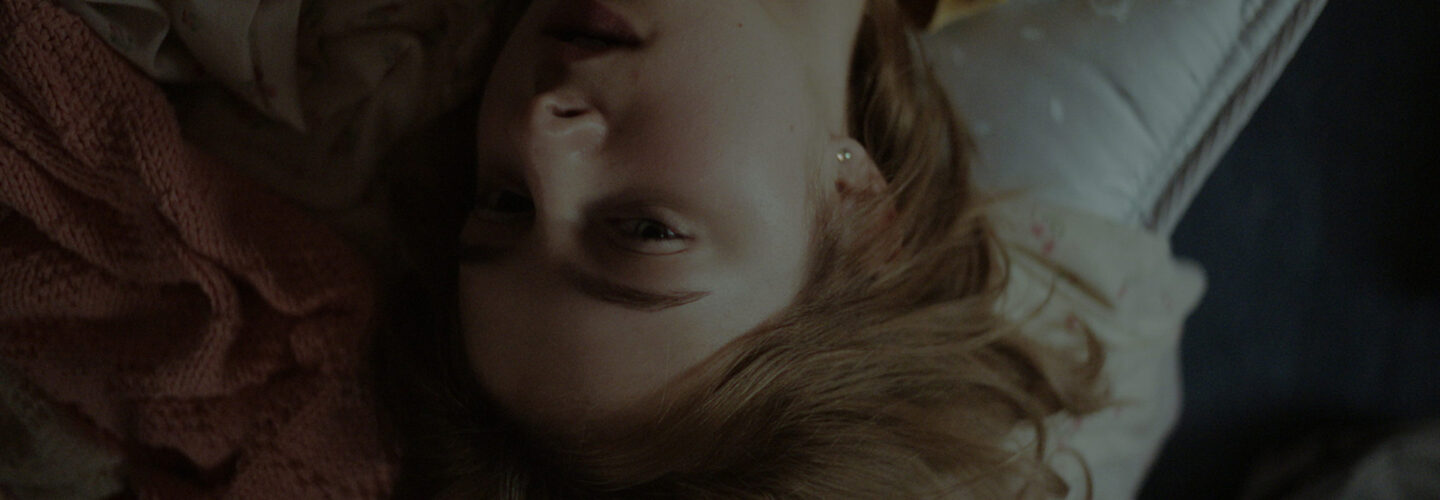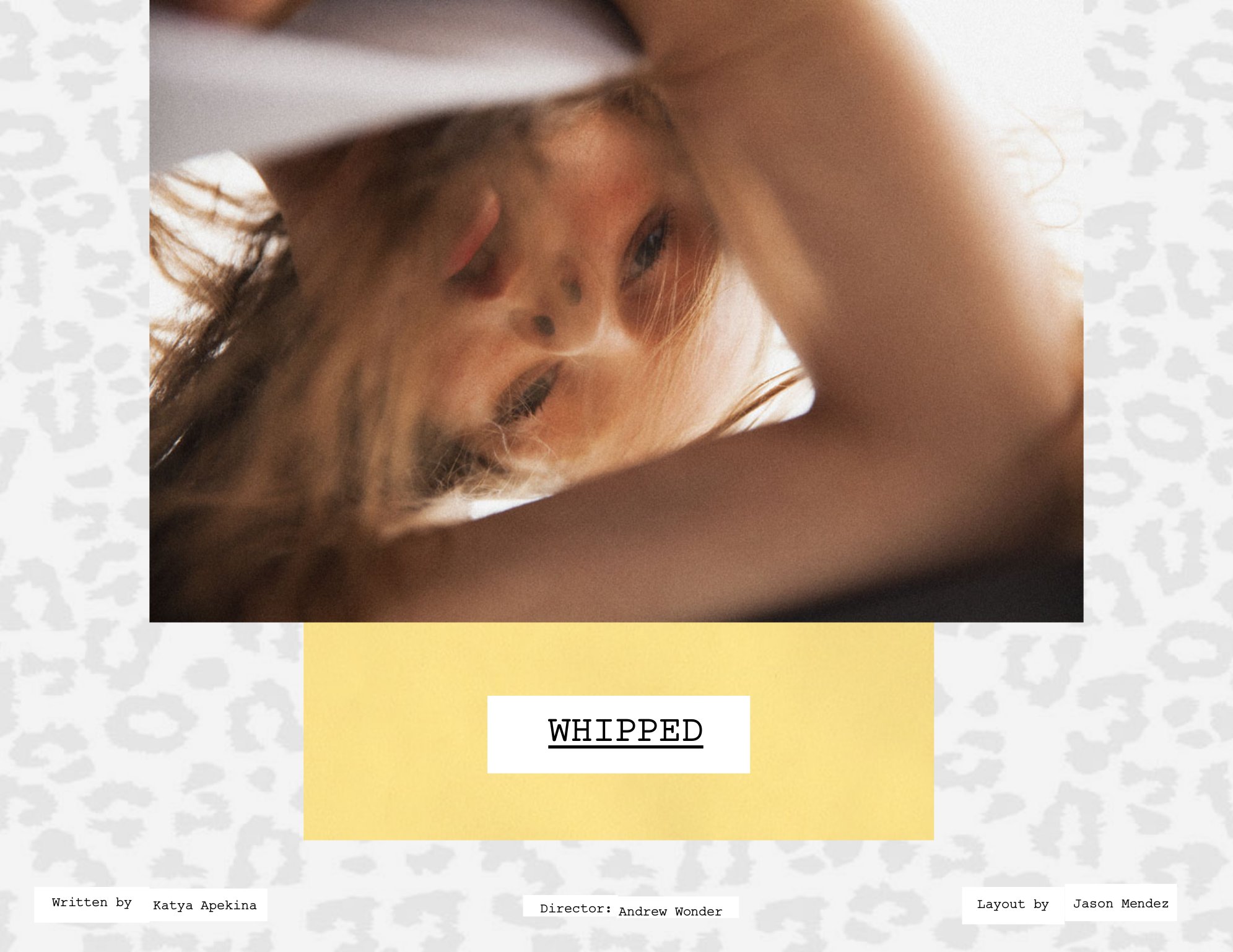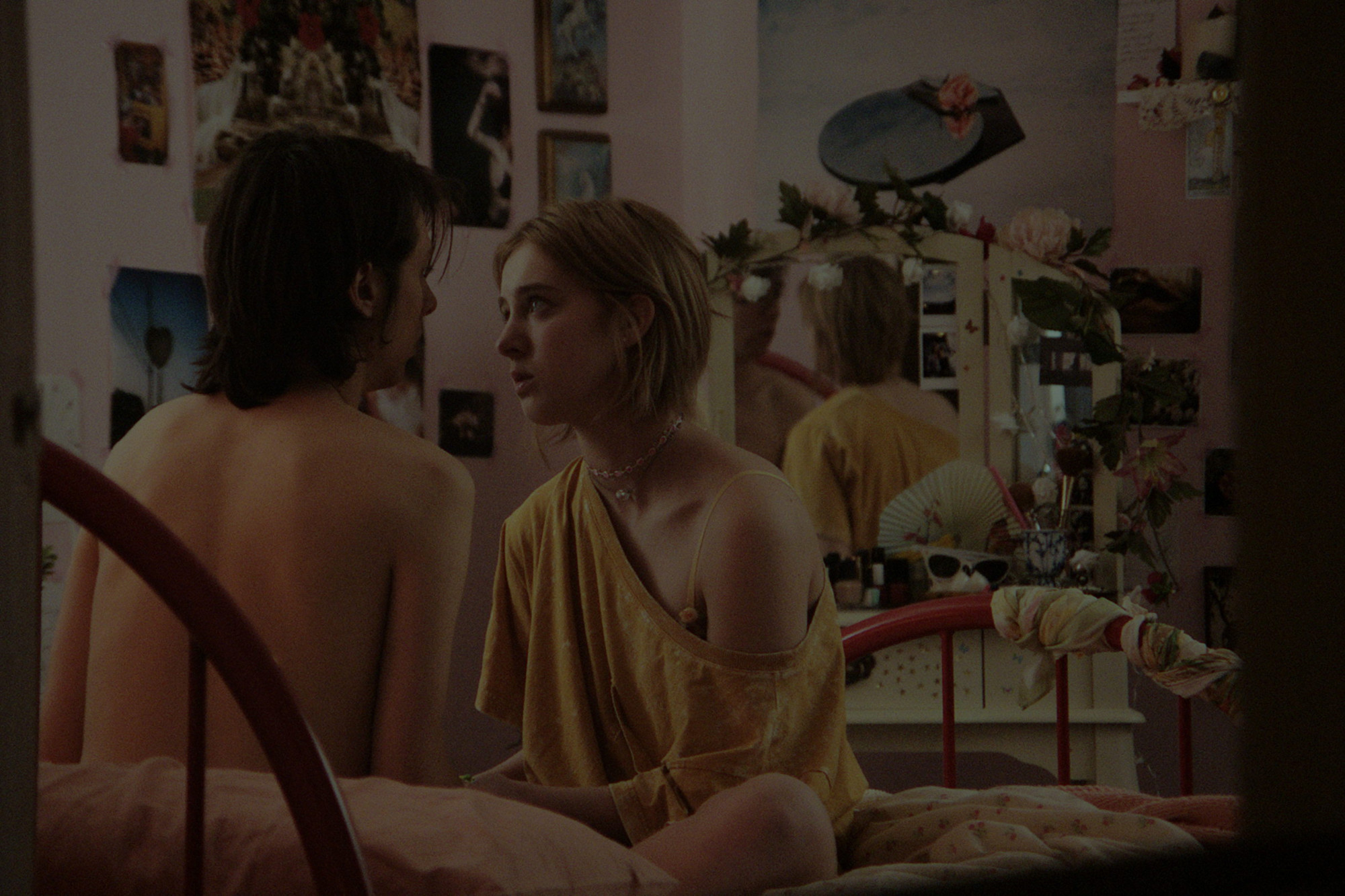
If you suddenly found yourself with the power to bend people’s actions to your will how would you use it? For the teenage girl at the centre of Andrew Wonder’s new short film Whipped, it provides the perfect opportunity to put a year of observing the fun of high school from the lonely periphery behind her and discover if the bedroom fantasies about her crush feel as good in the flesh. As part of Whipped’s premiere on Directors Notes today, we sat down with Andrew for a detailed discussion about how he and his team of close collaborators experimented with performance, aspect ratios and sound design to bring the complex and tumultuous emotions of teenage loneliness and desire to screen.
What made you want to tell this story of teen desire, control and guilt?
I’ve been working with teenagers since I was 17 traveling the country for MTV’s Made. I’ve met so many young people around this age that are growing into adulthood and struggling silently trying to find their voice/confidence to ask for what they want. This idea had floated around my head for years. I always thought it would be interesting to see what someone would do with the ability to control someone’s mind and the desire that goes with it that age. I hoped this film could show the truth we all learn: that even if you were to get the thing you think you wanted it probably wouldn’t make you happy.
I was approached by a comic book publisher to develop a series of short films. One of my favorite writers, Katya Apekina (her novel was just released) turned it into this script as part of the pitch. When the project didn’t move forward I was so in love with the script Katya wrote that my Producer Alon Simcha and I decided we should make it on our own.
We have more than enough movies in the world and it’s always been my feeling that if we are going to make one, it should be approached as if it’s the only one you’ll ever make .
Whipped unfolds within the sanctuary of Elaine’s bedroom, what visual opportunities/challenges did that confined setting present you with?
Visually, our goal was to show the emotional reality that comes with being a teenager set against the outward image they project back to the world. With artists like Petra Collins and Olivia Bee, we’ve seen a new aesthetic created around teens in the last few years. A visually curated world that is precise and full of meaningful details and meandering delight. Working with my creative partner, Jason Mendez, we developed a visual deck that was a comic book version of the script with pulled images so that all our film’s collaborators would be instantly brought into the world Katya and I had been developing in our heads.
One of the biggest challenges of a film with just two characters in a room together is making the room just as important of a character without it hijacking the film. When I started collaborating with Colleen Dodge (Production Designer) and Olga Mill (Wardrobe) we talked about what makes a teenage girl’s room special and unique. My favorite discovery is when we all started talking about the shrines we build as teens to the things we love which became the basis of our whole design of the film.
I cannot underplay the gift that Colleen and her team brought to the film. Since we literally owned the location (we shot at my Mom’s house) they took a week to transform the room into what you see in the film. Nothing but the bed frame and carpet were there before they started. What impressed me most was the photo collages on the wall which Colleen made by taking small items from Actor Madeleine Yen’s teenage years, combined with photos from a road trip with friends when Colleen was a teen and other items from our collective teen years. These personal images gave a history to the set and as our rehearsal day began Madeleine and I walked the room, scanning the photos together, settling into the history of the world we were creating.
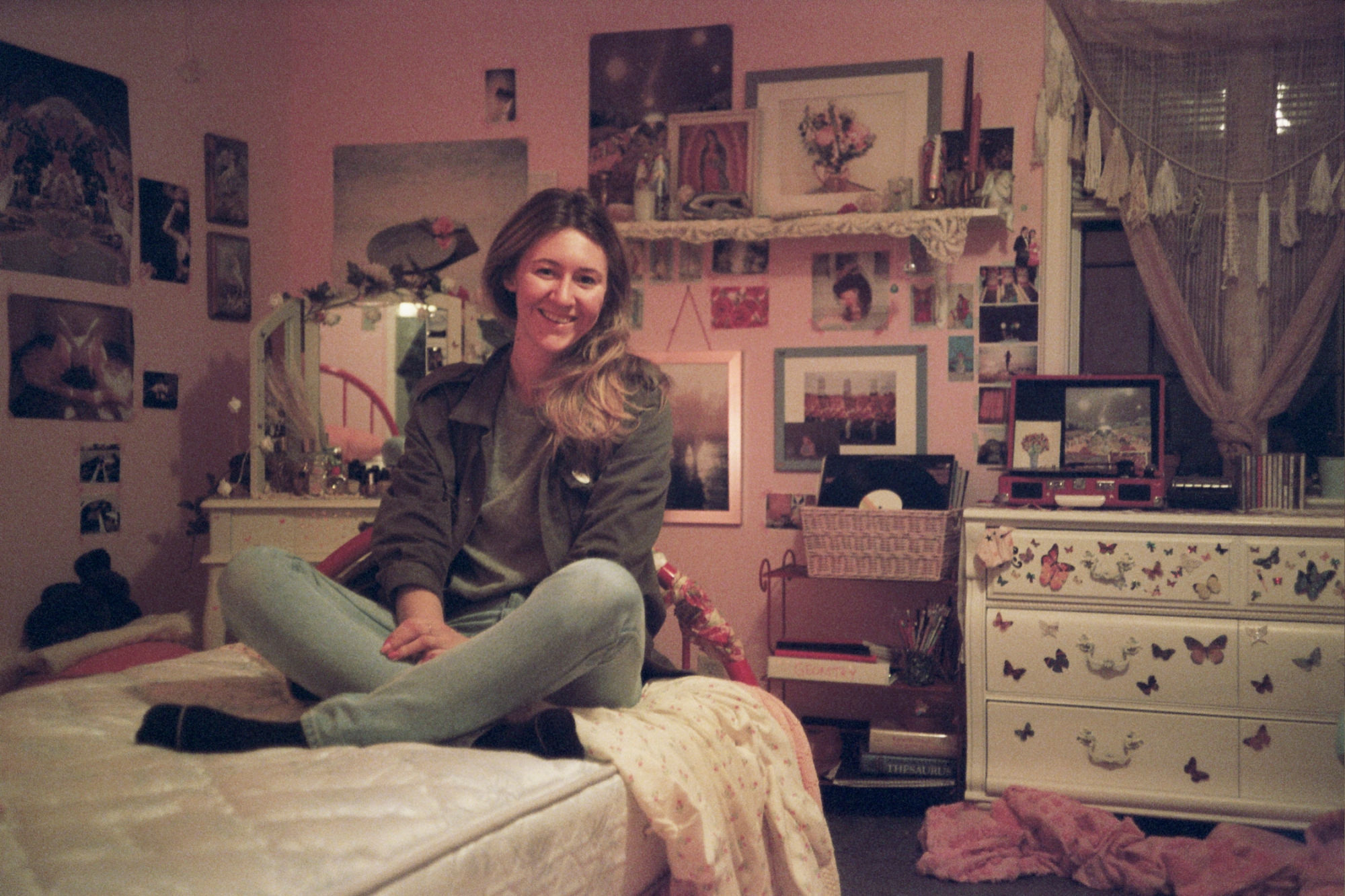
Could you tell us about your shoot set up and how the choices you made to define the look of the film?
I own and use an Alexa Mini on most of my shoots and had grown tired of how all Alexa footage was starting to look the same (like when people all use the same film stock). When I was just out of college I was lucky enough to show Harris Savides, ASC around a digital camera and we developed a small friendship that led to me doing film tests and other experiments for him. He had a really specific way of breaking down a piece of gear as we played with crazy workflows and I wanted to try and create a new way of handling a digital image that would make him proud. Through a series of tests and LUT development with Colorist Vlad Kucherov, we found a sweet spot in the toenail of the image curve before the image falls apart.
Through a combination of exposure, custom color filters and uncoated lenses I was able to capture an image with the camera that was much more analogue with a much more limited, but smoother dynamic range in the shadows. What you see in the final film is exactly how the image looked on set. Our workflow was so extreme and the ARRIRAW files so abused that there was no room for adjustments in post.
I wanted to try and create a new way of handling a digital image.
At this time I had also become really interested in finding new ways to use zoom lenses. I had been to that exhibit of Kubrick artifacts and saw the 20x zoom lenses he used on Barry Lyndon and starting sourcing some modified versions of the components he used. I had also discovered a rare version of the Angeneuix zoom lens Coppola used on the Godfather and Altman used all over that had the same small mechanics of the original but with a newer coating that gave it a lot more detail. It looks like a 25-250HP in terms of sharpness but all the skin tone detail melts away like an old Baltar.
Originally I hadn’t intended on so many zooms in the film but Paul Duclos had been rebuilding some for me and they arrived on our rehearsal day. Once I put them on the camera and saw all the color and contrast they added to the image it got hard for me to take them off, especially as I kept discovering how using the zoom different ways and in combination with the slider could really enhance and change the performance take to take.
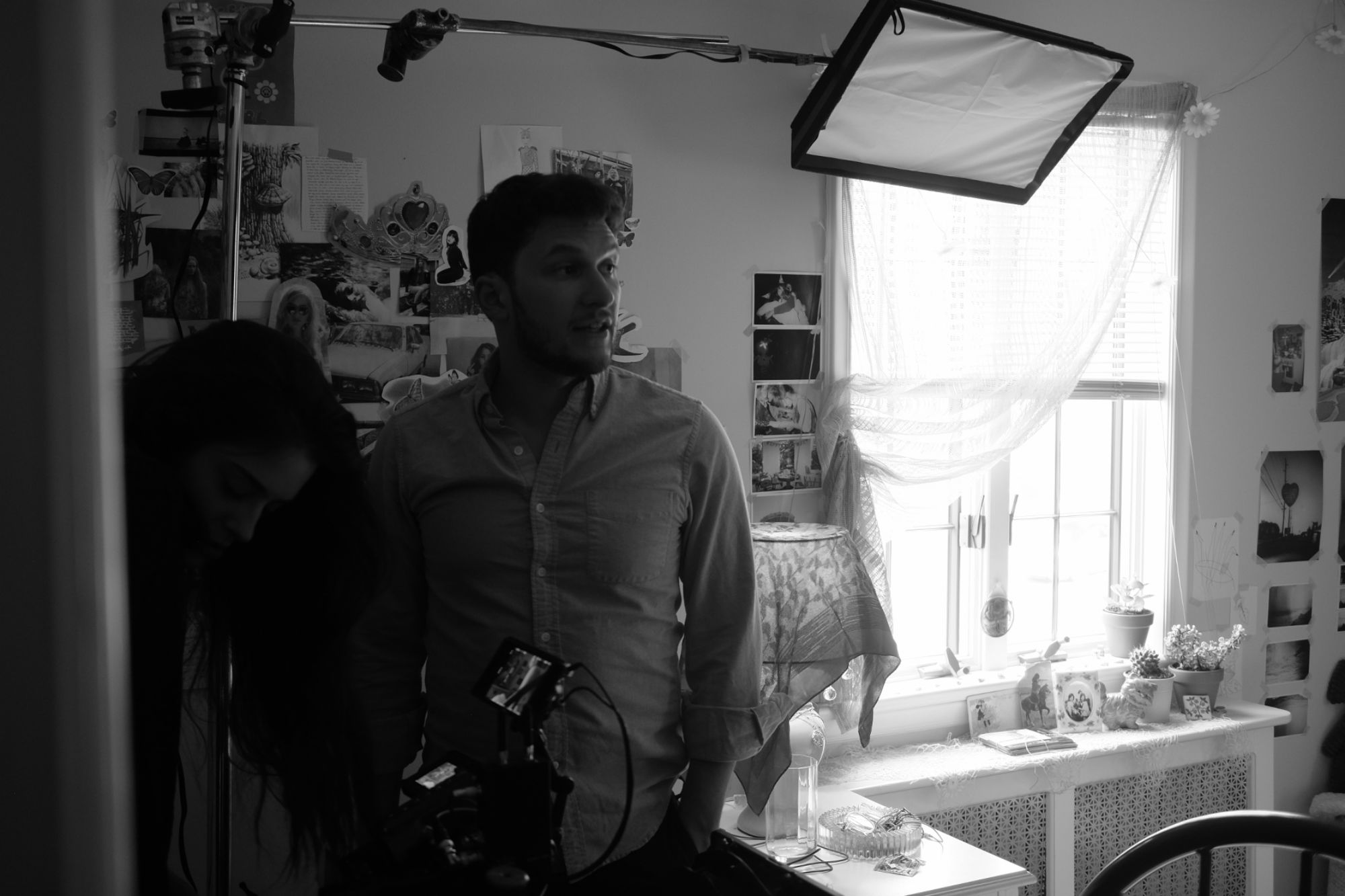
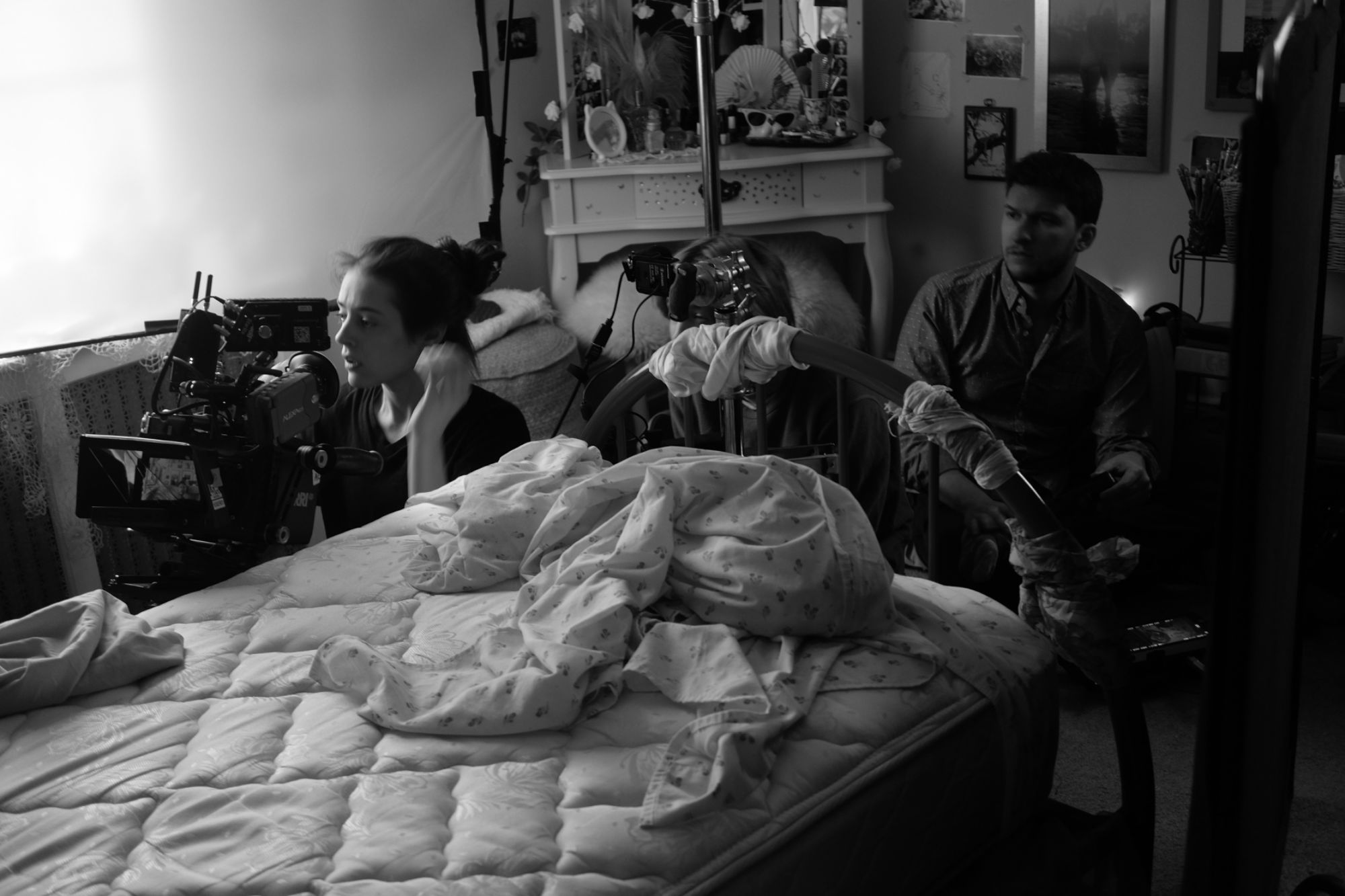


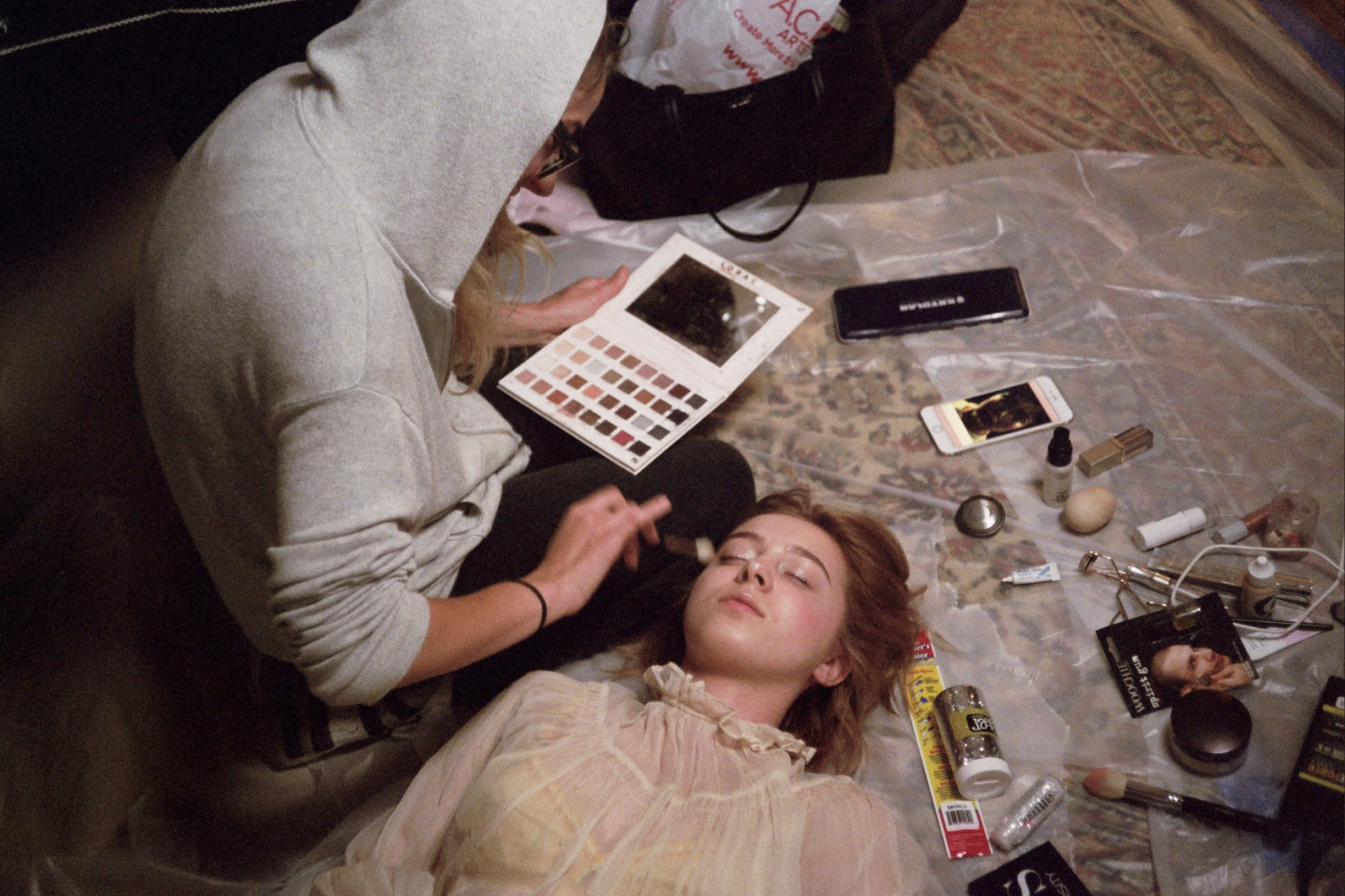
I’m proud of this experimentation because it allowed DP Allison Anderson and I to use our prep time not just to go over logistics but talk about the DNA of the image we were creating and when to use each of the techniques we were exploring. This experimentation led to a very different film than what was on our page or shot list, all growing out of the story and performances on set. My favorite is the moment we cut outside and there is a long zoom around the neighborhood and into Elaine’s window.
Throughout our first day of shooting the performances grew more and more intimate. As the reality of spending almost the entire film in a bedroom set in, it became clear we needed a bigger moment to show Elaine making her decision about Daniel and her power over him. We had seen first hand what a 20x zoom could bring to a scene and came up with the idea of zooming into the window. Thanks to some quick work from the art department and Alison’s bravery, our second day began with her on a ladder on a cube truck making this moment come to life.
How straight forward (or not) was the process of shaping and refining the mix of rehearsed performance and on set exploration with your actors?
Filmmaking is a team sport. If my ideas were good enough, then I would write novels. What I love about film is that it’s the micro details of life that allows a story to be universal. There’s no greater gift on set then sorting through how everyone connects with a story and finding the thread that resonates with everyone. I want sets to be somewhere between a football practice and a birthday party where everyone is focused, present in the moment but free to explore. I do extensive prep on my own, timing out dialogue scenes, writing notes, creating beat by beat shot lists then throw them all away when we get on set and dig into what’s in front of me.
Madeleine’s prep began with conversations and personal sharing. We went through the script sharing our own stories and talked about what details of our lives we could infuse into the performance. The first decision we made was what record Elaine would be playing and Madeleine picked Carole King’s Tapestry which when we began shooting I would play for the crew.
As we incorporated Owen Campbell (who plays Daniel) into the world we talked about what made an interaction feel real and what made it feel like a movie. When shooting began this open communication became part of the process as ideas would flow back and forth between us and the crew. The majority of the camera setups you see in the film are from the final takes after we had shot what we planned and started hunting for something we all connected with.
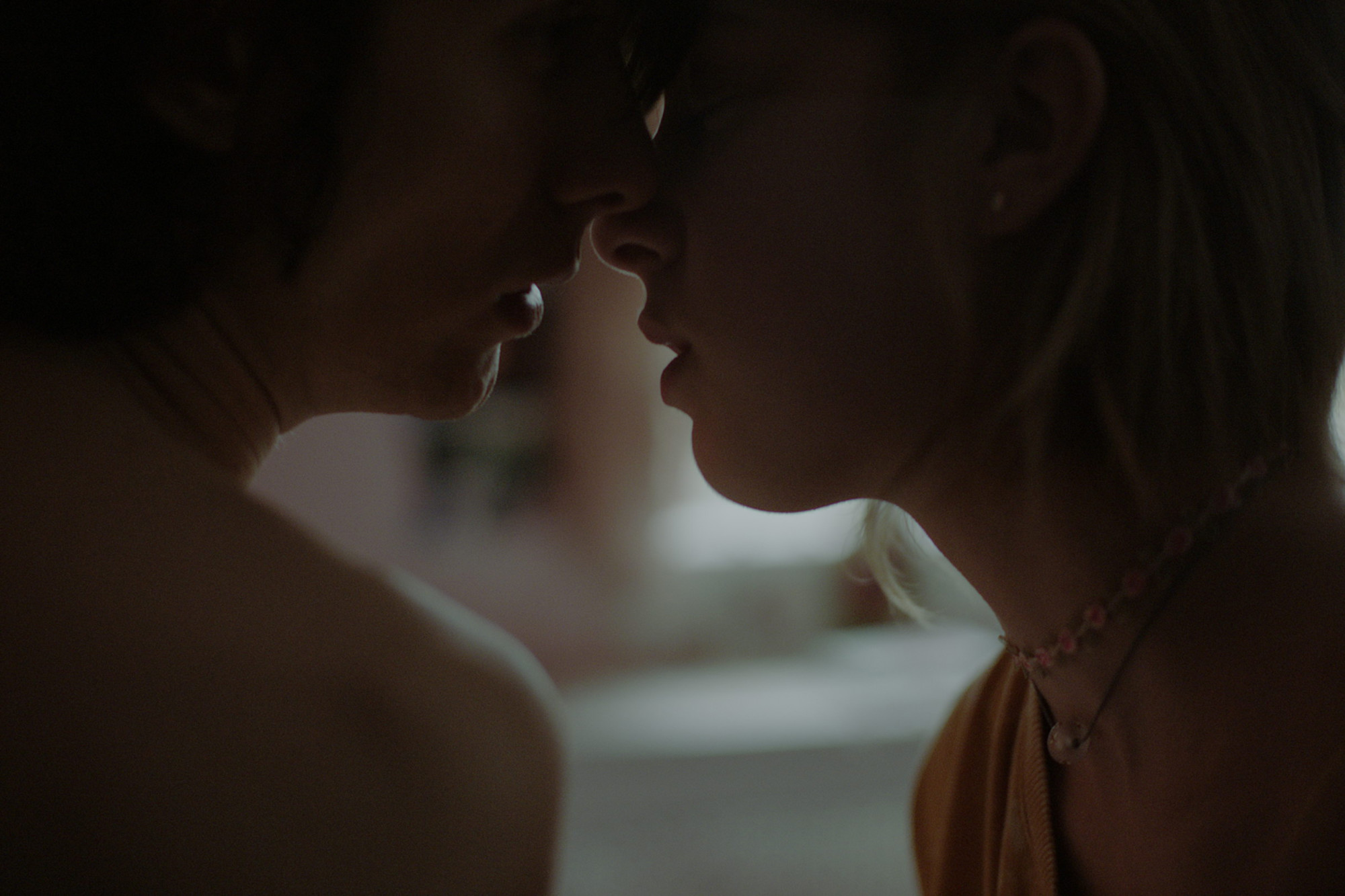
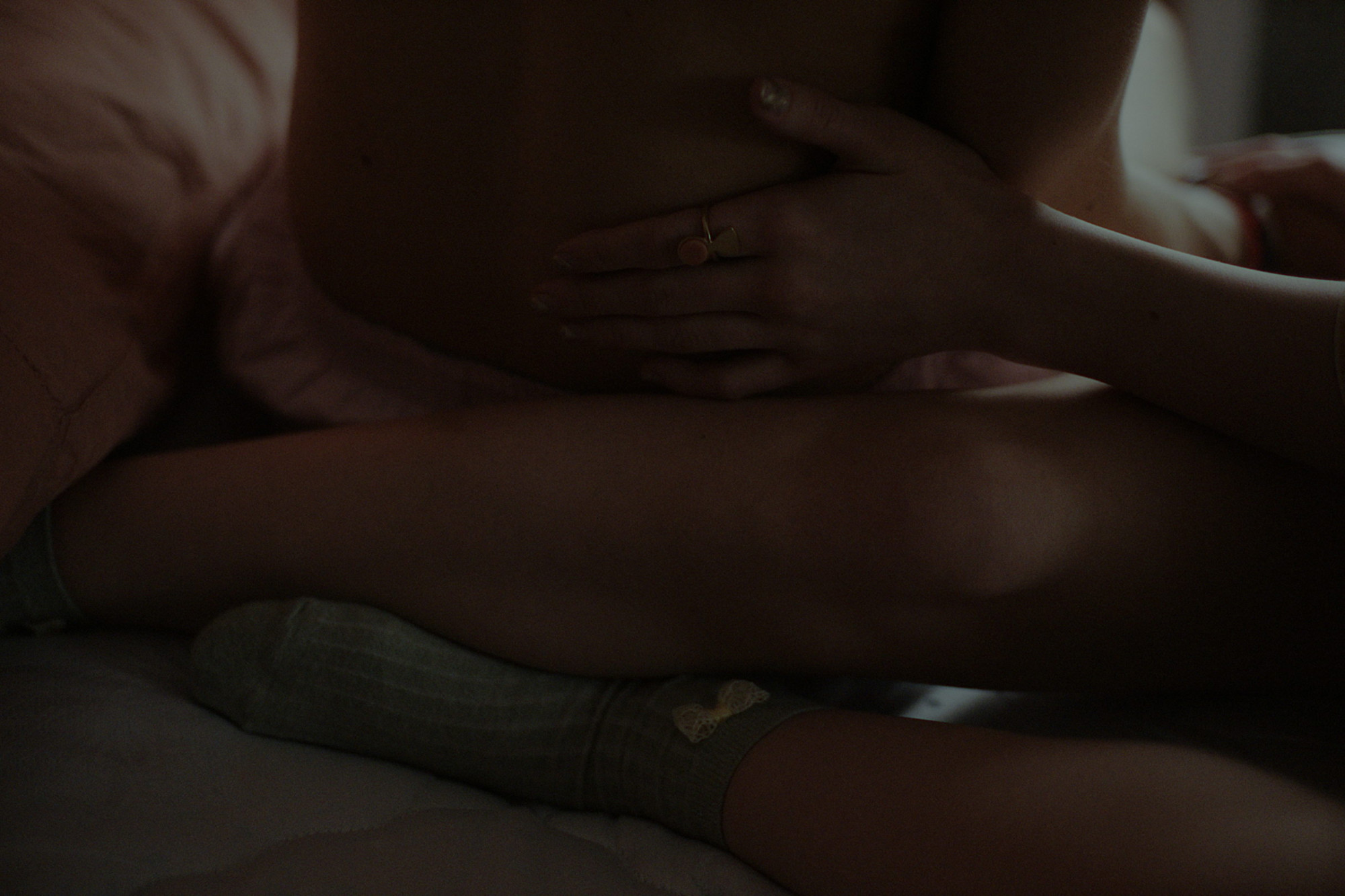
My team does a lot of prep work so that on set we are free to explore and find moments we all connect with.
I am a big believer in duel objectives. In life, we never have a single focus because we are always afraid of consequence. You may want desperately to seduce someone you’ve only been friends with but you would never fully chase them because if you did it would scare them away. We spent a lot of time discussing that duality inside each character and how it would change throughout the film. On set, I would pick certain moments from the script as turning points and we would run the scenes with different balances of those objectives and have them change at different turning points until we found emotion that hit us all right in the chest.
The credit truly goes to Madeleine and Owen, both actors with so much skill but, even more excitingly, the vulnerability to put on someone else’s skin without being afraid to expose themselves. There is no film unless you believe their performances and no matter how many takes we did or alternatives we came up with they always dug deeper and deeper into themselves and put it out there for us to see.
The sparse score we hear in Whipped, coupled with the record scratches, feel more like moments of punctuation than the typical musical mood setting. How did you devising the film’s soundtrack?
When I thought of Elaine’s character I always thought of someone trying to hold their breath underwater, afraid that if they let go they would drown. I wanted the sound of the record to serve as pressure, like his heartbeat suffocating her, as she struggles with the choice of whether or not to release him from her powers.
I’m very lucky to have met the triple threat of sound, Max Phillips. We started working together years ago in production sound and as we got to know each better I learned more about Max’s incredible talent with music and sound design. Together we approached the script with sound as I would visuals with a DP. We talked about the emotional arc of Elaine and what Daniel’s presence would mean to her. When I have those feelings of guilt and shame my brain starts to dig, spiraling deeper and deeper and I thought there was no better representation of that then the sound of a record that is waiting to be turned. This sound is the pressure that comes with Daniel’s presence and that’s why it disappears when she finally makes her decision and turns the player off.
Max does all my sound design and when I’m lucky music too. He did an amazing job tackling the challenge of two topless people whispering in a bedroom and created a soundscape where we can live inside Elaine’s head. I’m particularly proud of the song at the end which Max wrote and recorded with the help of Lauren Glass’ vocals.
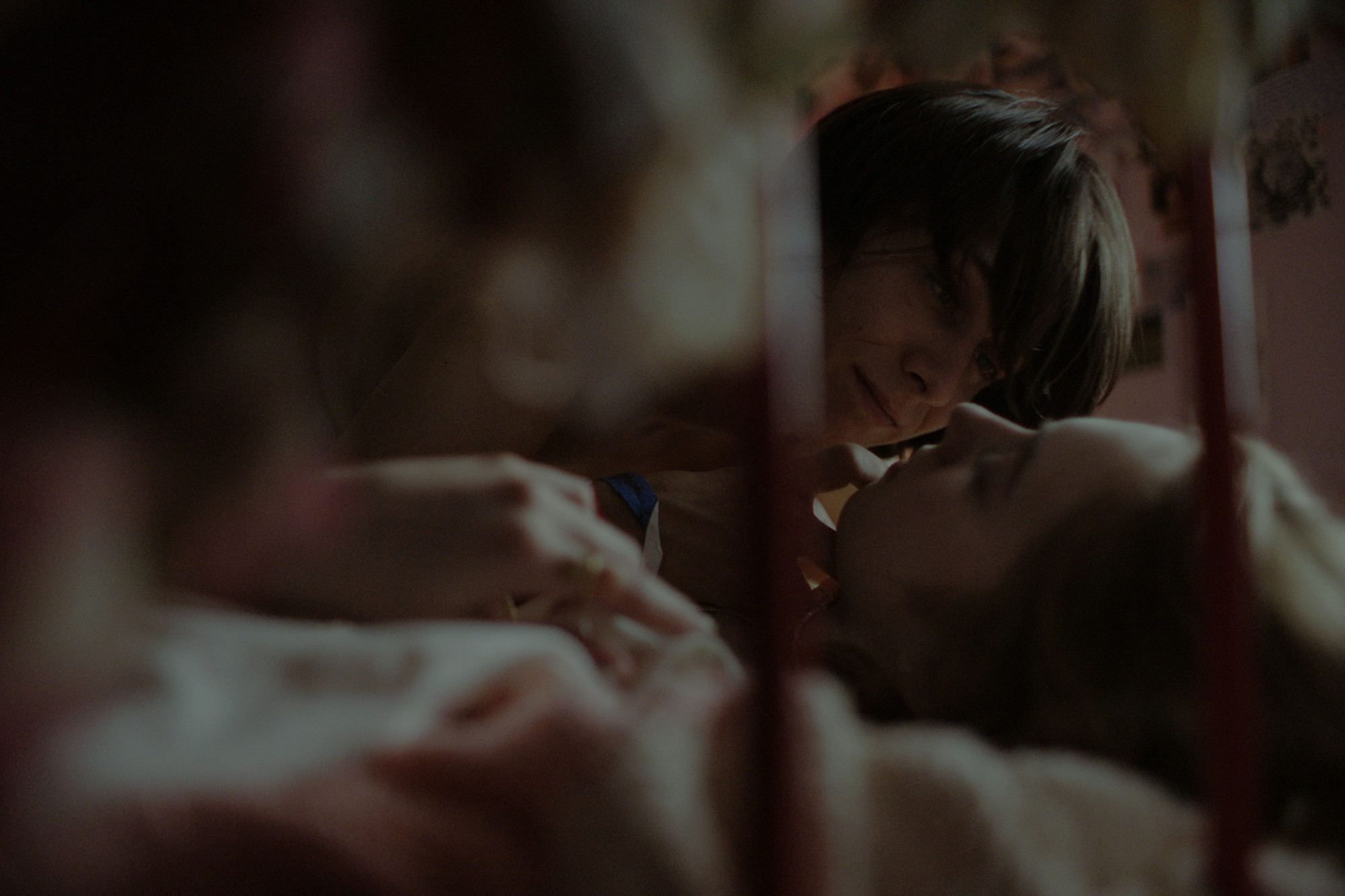
How did you arrive at the decision to overlay Elaine’s encounter on top of the record frame?
We’ve had very split reactions to this decision. I love it. Alon Simcha, my lifelong producer, hates it. It started with the aspect ratio. I wanted to create one I hadn’t seen on screen before and after some experimentation, I settled on a version of 1.55:1 which our Editor Jason Sager started to call “Vinyl”. When Max and Jason started laying in the record loop sound I was inspired by the amount of tension we added to the story and wanted to see if there was a visual way to emphasize it.
We had been experimenting with textures in the letterbox area for a feature that lost its financing and when we tried it here I really liked the results. I figured that since it was a short film, it would be a perfect chance to see if it enhanced the story or distracted from it. The jury is still out so if you (or anyone reading this) has thoughts on it or how to implement it better, please let me know. If we are going to cut off huge parts of a TV screen to make the framings we want I feel we might as well do something interesting with that real estate.
Short films are tough, like commercials because you don’t get the time to build momentum with the crew.
Do you know what we’ll see from you next?
Some projects are bridges, others are destinations and I’ll always be grateful for this film because it was a bridge to so many wonderful things in my life. I’m grateful to have a crew who I consider my family and to make projects that I feel are the best of all of us. Whipped gave us all a confidence to move forward in our own way of making narratives and I’m excited to say we are just finishing our first narrative feature, FERAL, which was my first time shooting underground with mole people since my film Undercity.
I’m also at the beginning of my new production company, Tomorrow, that I dream will challenge the traditional models of commercial production and help release new human and community centric products for the whole industry to hopefully embrace. We are truly in the most exciting time in the history of filmmaking and it is time for us to use the responsibility that comes with being a director and production company to make our industry a better place for crews, talent and everyone who watches our content.
I could not have wished for a more special premiere date than today, 1/22/19. In a few hours from now, my sister will be entering the hospital to deliver her first child and I cannot wait to have this person bring a new narrative to our family’s story. I make these films because they are personal because I know this pain and I know what it’s like to want something so bad and have every way it works still hurt you. I don’t know him yet, but I already love Frank and I hope if we all keep putting out stories that are honest and personal then hopefully his generation will know they never have to feel alone.

